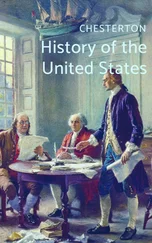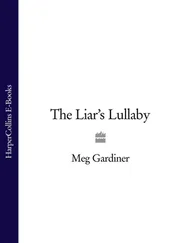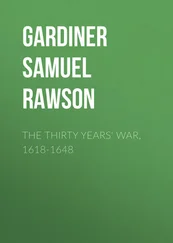The educational and occupational activities at the unemployment centres may have seemed like splendid opportunities to those offering them, but from those on the receiving end, enthusiasm was not always so evident. Since club leaders were poorly paid, suitable people could be hard to find, and a great deal depended on their vitality and organisational skills. Such activities as the centres offered tended to appeal more to the young than to the older long-term unemployed, and class numbers dropped in some districts. ‘What we unemployed could do with is a little less of education and a little more of entertainment,’ suggested one of their nameless number in a letter to the Spectator in March 1933, while the anguish of an out-of-work miner permeates a documentary film made in 1932, when unemployment stood at over two million: ‘We can do physical jerks, grow cabbages until we’re blue in the face, but it’s not paid work. It’s just killing time. It’s not the real work that we want.’
EIGHT The Hard Road Travelled
The British working man, employed or unemployed, is very conservative in his allegiance to law, order and tradition. He hates the idea of a Red Revolution, which he knows would make an awful mess … Communist visitors in the distressed areas get short shrift from men standing unemployed round disused pit-heads.
Sir Philip Gibbs, Ordeal in England (1937)
No saviour from on high delivers,
No trust have we in prince or peer.
Our own right hand the chains must sever …
From the third verse of ‘The Internationale’
On the first day of 1932 the son and heir of the 7th Earl Fitzwilliam attained his majority. To celebrate, beacons were lit on the hills surrounding the family’s magnificent house, Wentworth. Built in the 1720s, the largest privately owned house in Britain, it had a room for every day of the year, and five miles of corridors. In front of the façade, which was the longest in Europe, the Elsecar Colliery Brass Band struck up, and a crowd 40,000 strong joined in singing ‘Londonderry Air’ and ‘We Won’t Come Home Till Morning’. And when the birthday boy, Lord Milton, drove with his father in the first car of a fleet of yellow Rolls-Royces on a ceremonial tour of his estates, the eight-mile route was lined with estate workers and the men who worked in the Fitzwilliams’ mines (on short time, given the economic climate) and their families, all waving and cheering, delighted that they had each been given a day’s paid holiday and a freshly issued ten-shilling note. At various stops en route Lord Milton would open proceedings by cutting a ribbon with a gold pocket knife his father had given him for his birthday, and at the New Stubbin pit the Secretary of the Yorkshire Miners’ Association stepped forward to thank the Earl and applaud him as ‘the finest idealistic employer in the country today’, a mine-owner who had so arranged things that not a single man had been dismissed despite the slump, and shifts had been arranged so the men received ‘the fullest benefits of the Unemployment Act’.
The Wentworth miners might have doffed their flat caps and have had reason to feel grateful towards their employers, but in the 1930s most coalminers — the ‘sort of grimy caryatid[s] upon whose shoulders nearly everything that is not grimy is supported’, according to George Orwell, had both particular grievances and a particular militancy. The 1926 General Strike left a bitter legacy for men working in the Welsh Valleys, the Scottish, Durham and East Midlands coalfields, most of whom stayed on strike for months after the nine-day TUC strike collapsed. As a result many were blacklisted by the colliery owners, and never worked again. Wages were cut, hours extended and working conditions deteriorated. Employment in the coal industry fell consistently, from 218,000 in 1926 to 136,000 in 1932, and across Wales as a whole unemployment averaged 39 per cent.
At a time when over 40 per cent of the miners were out of work in the Yorkshire coalfields, a local headmaster would reputedly admonish pupils who answered his question, ‘Now then, boy, what are you going to do when you leave school?’ ‘We’re going to pit, sir,’ with ‘’Cos tha’ strong in the arm and weak in the head.’ Coalmining remained probably the most dangerous occupation in Britain. A West Lothian pit was known locally as ‘the Dardanelles pit. It was named that because of the high accident rate — they compared it with the slaughter at the Dardanelles’ in the First World War. There was widespread bitterness about the lack of compliance — since compliance invariably cost money — that many mine-owners accorded to health and safety regulations, and in the early hours of 22 September 1934 one of the worst mining disasters in British history occurred at Gresford colliery near Wrexham in North Wales, when an explosion ripped through part of the mine known as the Dennis section during the night shift. Although six miners managed to crawl to safety, three men were killed in the rescue attempt, and on the following night, Sunday, 23 September, it was agreed that the mine should be sealed with the dead miners entombed inside. A further violent explosion a couple of days later killed a surface worker: the disaster had claimed a total of 266 lives.
At the subsequent inquiry, Sir Stafford Cripps agreed to represent the mineworkers’ union pro bono . Despite the Labour lawyer’s relentless, technically informed questioning (Cripps had read chemistry at University College London, since he considered the lab conditions there to be far superior to those at either Oxford or Cambridge, before turning to law) in pursuit of his contention that safety had been sacrificed in the pursuit of profit, it was hard to establish what precisely had caused a build-up of lethal methane gas which had ignited, particularly since the mine-owners refused to allow the sealed section to be opened for inspection. While the report that the Chief Inspector of Mines, Sir Henry Walker, laid before Parliament in January 1937 singled out no one — neither the colliery management, the firemen who worked down the mine, the shot-firers whose job it was to blow up the coal face so the miners could get at the coal to be hewn, nor the inspectors — as having been criminally negligent, he concluded that nor had any of them performed their duties satisfactorily. Yet when charges were brought in the courts by the bereaved against the company and its officials, most of the cases were either dismissed or withdrawn, and no one was convicted of any wrongdoing.
The Gresford pit disaster provoked nationwide sympathy, gifts (over half a million pounds were raised) and unease among many that until the mines were taken out of private hands the catalogue of accidents and disregard for safety would continue, as would the mining industry’s generally poor industrial relations and sluggish productivity.
The previous September, unemployed coalminers had marched from South Wales to Bristol to lobby the TUC meeting there, and in September 1932 a contingent from Wales was among the eighteen from all over Britain that marched on London in what the organisers, the NUWM, called the ‘Great National Hunger March of the Unemployed Against the Means Test’, which culminated in a rally in Hyde Park. The NUWM claimed there were 100,000 unemployed in the park on 27 October, while the Metropolitan Police estimated the number at somewhere between 10,000 and 25,000.
This ‘great march’ was the largest to date, but by no means the first of the frequent protests by the unemployed since the effects of the Depression had first begun to bite in 1920. As well as numerous local demonstrations, the NUWM organised six national marches between 1922 and 1936, gathering contingents from all over the country to march to London with their demand for ‘work or full maintenance at trade union rates’. ‘If history is to be truly recorded,’ wrote Wal Hannington, ‘our future historians must include this feature of the “Hungry Thirties”.’ To Hannington the marches were a rebuttal of the charge — or, in the case of such proto-sociologists as the Pilgrim Trust survey team or E. Wight Bakke, the sympathetic observation — that the unemployed were apathetic, that they ‘quietly suffered their degradation and poverty’ despite the evident fact that ‘they were hungry; their wives and children were hungry’.
Читать дальше












